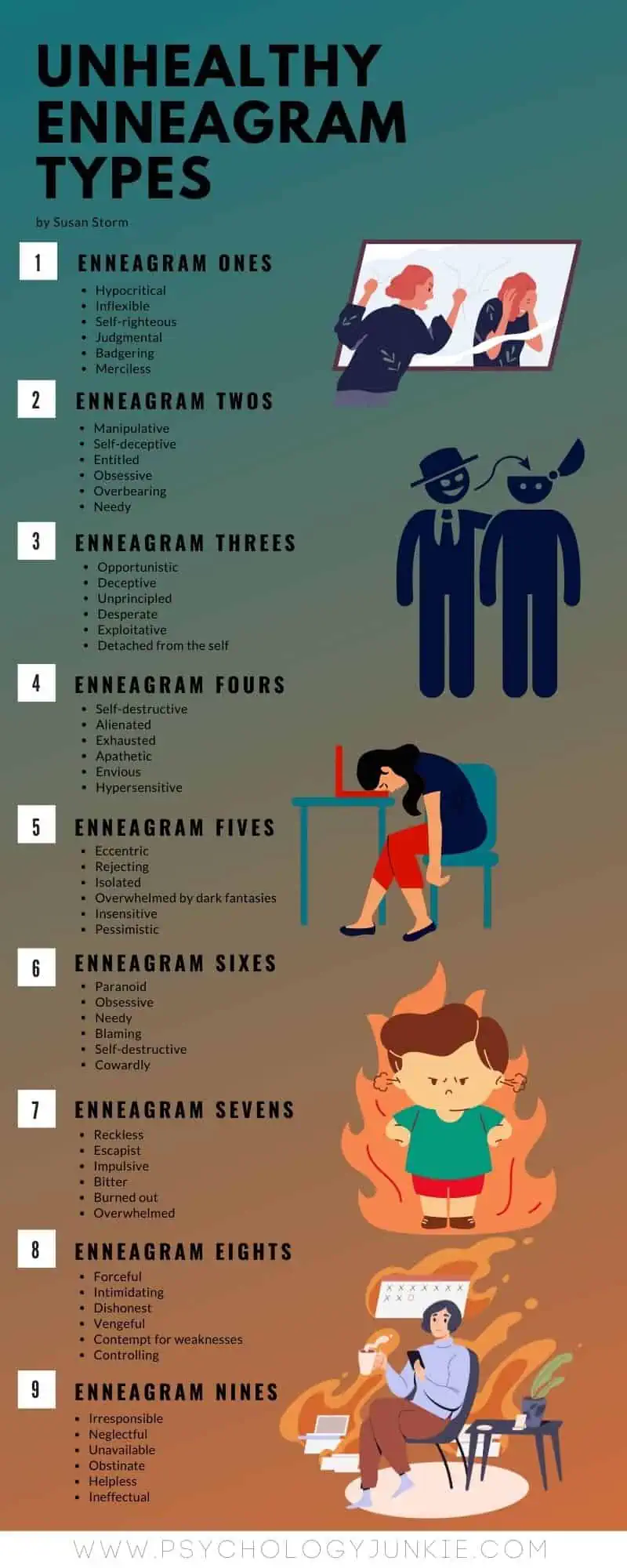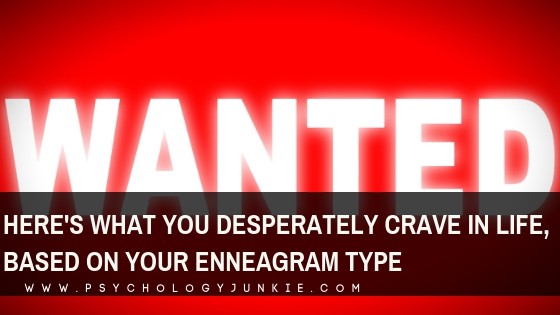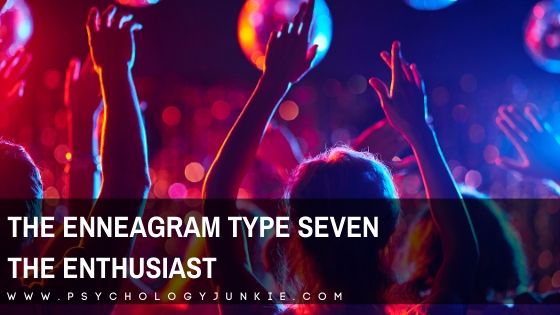The Dark Side of Each Enneagram Type
Everyone has a dark side, right? We all have moments where we’re not at our best due to stress, exhaustion, or immaturity. But what happens when we’re at our absolute worst? Today that’s what we’re going to explore. Each of the nine Enneagram types can descend into unhealthy behavior when they are using unhealthy coping mechanisms and going to extreme lengths to avoid their core fear. Today we’re going to look at how these types show up at their worst and give some pointers for moving past this stage.
Not sure what your Enneagram type is? Take our free questionnaire here

The Dark Side of Each Enneagram Type
Enneagram 1
Enneagram Ones have a driving desire to be good and to have integrity. These are types that can push themselves to the brink of exhaustion merely to do what they believe is right. At their best, they are wise, generous, and uplifting. Tolerance is a hallmark trait of the healthy One. They know that nobody is perfect, but they bring out the best in people simply by being present. Their natural integrity inspires others to live with more intention and purpose.
The Enneagram One Dark Side:
When Ones are unhealthy or immature they can show a dark side that is far from the noble, sensible side that shows up when they are healthy. Unhealthy Ones fear that they are realizing their worst fear: that they are indeed becoming corrupted or “evil.” They try to control their impulses, justify themselves, or rid themselves of anyone or anything who makes them aware of their corruption. Their inner turmoil shows up in an obsessive, controlling nature. If they can control everything outside themselves then perhaps they can fool themselves into believing they are really okay.
Unhealthy Ones are intolerant to others and closed-minded to anyone who shows a different value system from their own. Black-and-white, absolutist thinking is a hallmark of the unhealthy One. They can never be wrong, even when given objectively verifiable facts. When you’re around these Ones you feel like you are walking on eggshells for fear of triggering their condemnation. Like the priest in The Hunchback of Notre Dame, these Ones are quick to judge and condemn what is different from themselves while secretly harboring thoughts that are far from pure or righteous.
The unhealthy One is a deeply conflicted and tormented individual. They struggle with obsessive thoughts that are corrupt or evil. The more they try to silence these thoughts, the more they seem to flare up uncontrollably. The more they repress their feelings and impulses, the worse they become twisted and distorted. As a result, Ones expend tremendous energy simply trying to put a lid on these thoughts; to focus on something else. They may obsessively clean, control their food intake, budget their money, or otherwise try to organize and manage their environment so they can feel an element of control.
The Enneagram One dark side can be a powerful and overwhelming force, but with the right support this Enneatype can learn to find balance and peace of mind. Through understanding their need for perfection, their fear of being seen as corrupt, and their inner battle between those two contradictory forces, they can discover the noble and wise Enneagram One within. If you feel like you are at this kind of a dark and unhealthy place, I would recommend talking to a mental health professional who can help you sort out the roots of these issues. If you’d like to find more tips for regaining equilibrium, you can scroll to the bottom of my article on the struggles of the Enneagram One to find some tips.
Enneagram 2
Enneagram Twos have a driving desire to be loved for who they truly are. Deep down, they are afraid that whatever they do will never be enough to truly deserve and gain love; that they are unworthy of being loved. At their best, Twos love unconditionally without expecting anything in return. Their joy and generosity spark feelings of warmth and acceptance in those around them. They have the capacity to be deeply compassionate and understanding, often selflessly putting others first.
The Enneagram Two Dark Side:
When Twos are unhealthy or immature they can show a dark side that is far from the loving, generous side that shows up when they are healthy. Unhealthy Twos give in order to get. They try to gain love through manipulation rather than through authentically generous acts. This Two is a master in the art of the “guilt trip”; doing small favors for others, then acting shocked and hurt when others don’t show sufficient appreciation.
“They can play others like an orchestra, upping the level of guilt into a disturbing crescendo or dampening it down to a whisper, as needed. They play people against each other, and worse, they are able to play others against themselves…by casting others into self-doubt and making them feel guilty and confused, unhealthy Twos throw others off the scent of their own manipulations.” – Don Richard Riso with Russ Hudson, Personality Types: Using the Enneagram for Self-Discovery
Enneagram Twos become overly dependent on others and seek to control those around them, convincing themselves that they do whatever they do out of love and care. Unhealthy Enneagram Twos may be prone to drama and crisis, seeing their own problems as the only real ones in the world. They are experts at making themselves the center of attention while playing the role of martyr in order to gain love. Often they feel victimized by others; taken advantage of or used. And, in fact, they may have been taken advantage of by others, particularly in their pasts. But the unhealthy Two is quick to see themselves the victim when others simply aren’t providing enough “love” to fill the bottomless hole of longing they have inside of them. These Twos feel entitled to the love and subservience of others, because they feel that they have earned it through “selfless” acts. This Two may not have even done much to help someone else, but at their core they feel a right to be taken care of, and expect others to do the heavy lifting.
Twos don’t start off in this unhealthy state, however. Usually they arrive here by being hurt and taken advantage of, particularly in childhood, to a point where they no longer know what real love is and they’re tired of giving to others, because it hasn’t worked out so well for them in the past.
While the Enneagram Two dark side may be hard to look at, it doesn’t mean that all Enneagram Twos are doomed to live in a state of unhealthy darkness. In fact, with awareness and honest reflection, Enneagram Twos can begin to see the patterns of their behavior that no longer serve them, as well as any false core belief systems they may have adopted. From there, Enneagram Twos can begin a process of personal growth and transformation that enables them to find true love for themselves and others. With the right support, Enneagram Twos can rediscover their spark of generosity and compassion, which will allow them to experience real love that is unconditional and true.
I would encourage anyone who relates to this description of the Enneagram Two to seek out support in the form of mental health professionals or personal growth coaches. Through the help of others, Enneagram Twos can learn to tell the difference between healthy giving driven by genuine love and unhealthy giving driven by a need for approval.
If you feel that you are headed into an unhealthy place, you can also check out my article about the 7 struggles of the Enneagram Two. There are tips in that article for getting back to a positive frame of mind.
Enneagram 3
At their best, Threes are genuine and motivating. They are driven by a desire to improve the world and persist in far-reaching goals. Diligent and friendly, they make great leaders and they are often the go-to person when it comes to getting things done. The Three’s core desire is to be valuable and worthwhile, but their core fear is that they are worthless and will be rejected.
The Enneagram Three Dark Side:
As Threes descend into their dark side, they stop looking like the benevolent, motivating Threes we talked about in the first paragraph. They become opportunistic, manipulative, and deceptive. Inside they feel desolate and empty because they are so out of touch with their feelings and values that they can only find a “fix” in others’ admiration of them. Any vulnerability or inner wounding they will hide with a mask of false confidence and coolness.
The unhealthy Three is detached from their core; they don’t even know who they are anymore. Instead, they will do whatever it takes to convince others that they are exceptional. But instead of earning others’ admiration they distort the truth, cut corners, lie, or even take credit for others’ work. These Threes will do nearly anything to appear like successes to others, even if those very things hurt themselves and push them further into a place of disconnection and emptiness. This opportunism and dishonesty creates a simultaneous fear that they will be “found out.” Then they will realize their biggest fear; that they are, indeed, worthless and rejected. As long as they can keep the facade going, they feel that they can avoid that fear because others will see them as worthwhile due to their competency. They become compulsive about lying, because they so desire to make an impression and to appear outstanding. As their inner world becomes more tormented and afraid, they push to appear calm and competent and charming on the outside. At their very worst, they may enjoy the downfall of others simply so they can feel superior in comparison.
Like all the Enneatypes, unhealthy Threes don’t typically start out unhealthy. They often begin down this dark path in childhood, when they feel a need to be special and exceptional in order to gain love and approval from parents or caregivers who may be emotionally absent or hard to please. Enneagram Threes become so used to trying to please and make an impression that they forget their true selves in the process.
The good news is Enneagram Threes have tremendous potential for personal growth if they can recognize their unhealthy patterns, which often come from core insecurity and emotional disconnection. Through personal growth, Enneagram Threes can bring more authenticity back into their lives, be more connected with their own feelings and values, and learn that they are worthwhile even without grandiose levels of success. I would encourage Enneagram Threes to seek out support in the form of mental health professionals so they can begin the journey of uncovering their true self and finding inner peace and calm rather than emptiness and shame. Helping out in their communities is also an effective path towards healing. Many Threes find renewed clarity when they support a cause that matters to them or find a group where they can work towards something that benefits others.
Find Out More About the Enneagram Three: The Enneagram 3 Child
Enneagram 4
At their best, Enneagram Fours embrace life with an inspired, honest, and intuitive spirit. They are creative, sensitive, and passionate and are deeply in touch with the human condition. Contentment is a key trait of the healthy Four, and they find joy in engaging with the world around them while still maintaining their own inner sense of self.
The core desire of the Four is to find themselves and their significance, while their core fear is that they have no identity or personal significance.
The Enneagram Four Dark Side:
As Fours descend into darkness, they become overwhelmed with the feeling that they have lost every opportunity to find themselves and their own significance. They become overwhelmed by lost opportunities and their own perceived failures. Not only are they plagued by a sense of grief over what they have not accomplished, they are filled with a sense of desperation that they never will accomplish anything meaningful. Thus, they try to cut off their desires. They don’t want to hurt anymore, so if they don’t want anything, they believe they can protect themselves from pain. What results is that all the life and emotional depth drains out of them and they feel fatigued, apathetic, and alienated from everyone around them and even themselves.
The unhealthy Four often believes that their problems are worse than everyone else’s and that others have all let them down. Because they crave uniqueness, at an unhealthy level, they find that sense of uniqueness in the depth of their suffering. Their disappointment in themselves intensifies and they begin to hate themselves and see only their worst inner qualities. They believe they are unworthy of love from anyone and become obsessed with morbid fantasies. Ultimately, they feel rightly rejected by everyone and convinced that they are utterly and permanently defective.
The good news is Enneagram Fours have tremendous potential for personal growth and fulfillment. It’s extremely difficult for an unhealthy Four to see this potential in themselves, but if they can take the first step and seek support from a therapist, life coach, or trusted guide, they can begin to understand that deep down they are still worthwhile, worthy, and have incredible potential. I would also urge any Four who’s reading this article to take time to think through your core values. What matters to you in life? What ethics do you hold fast to? Find a few things you can do each day to reinforce those values. Whether that means volunteering for a cause or creating some simple art around those values, find a way to get in touch with the things that matter to you on a soul level.
Find Out More About the Enneagram Four: 7 Struggles of the Enneagram Four Personality Type
Enneagram 5
At their best, Enneagram Fives are visionary thinkers who balance curiosity with playfulness. They love to learn, but even moreso, they love to invent and create in the real world. Their open-minded, exploratory approach to life gives others a similar desire to learn and experiment.
The core desire of the Five is to be capable and competent, and the core fear of the Five is that they are helpless or incapable.
The Enneagram Five Dark Side:
Enneagram Fives in their dark side are plagued by doubt and disgust not only at the world outside, but themselves. They feel that they will inevitably fail at anything they attempt to do in the world and that they will never find a place to fit in in society. Rather than trying to experiment with ideas and create something, they instead focus on invalidating others’ ideas. They gain joy from discrediting others, poking fun at the foolishness of the world, and rejecting what others believe. Any attachment to others feels threatening, so Fives at this level justify their reclusiveness by losing all faith in humanity or its value.
Unfortunately, as Fives retreat further and further into the darkness of their own isolation, they become more and more fearful of the world outside. They feel incapable of coping and therefore rid themselves of anything that would force engagement or connection to anything external. Maybe they live in a small room, eating very little, working as little as possible to meet the bare minimum of their expenses. They are plagued by anxiety and become disconnected from their bodies; they feel as if they are merely ideas and thoughts connected to dangling limbs. Many Fives at this level experience insomnia because they are so riddled with fears that some unseen force will hurt them while they sleep. They aren’t just afraid of the world outside, they are afraid of their own thoughts which become increasingly morbid. Horrific fantasies and ideas play before their minds’ eye in an endless stream and they feel helpless to stop it. To compound matters, they resist any help from others and cut themselves off more and more from external sources of support.
It is extremely difficult for Fives at this level to reach out to others for support, but this is exactly what they must do. Enneagram Fives have tremendous potential to be joyful and original, but only when they are firmly grounded in what’s real. Getting professional help, getting in touch with nature, and exploring creative outlets can be great ways for Enneagram Fives to start moving out of the darkness and back into their potential. It can feel scary and uncomfortable at first, but it is essential. Fives can start simple, by taking quiet walks in nature or sending a text to a trusted friend. Even a few small steps each day will make a difference. Fives should try to get into their bodies, stretching, meditating, or working out. They should push themselves to connect with outside support if they’re at this unhealthy level. A counselor who specializing in dealing with anxiety and depression can be a tremendous resource.
Find Out More About the Enneagram Five: 7 Struggles of the Enneagram Five Personality Type
Enneagram 6
At their best, Sixes are courageous and grounded. They value loyalty, camaraderie, and compassion for those who are treated unfairly in the world. They take it upon themselves to protect their families and friends from danger, and are known to be trustworthy and pragmatic.
The core fear of the Six is that they are unable to survive on their own or that they are without support. The core desire of the Six is to find security, support, and belonging.
The Enneagram Six Dark Side:
When Sixes begin to enter their dark side, they grow increasingly skeptical of others. They feel plagued by doubt that others will betray them. Some Sixes react by testing others, becoming belligerent and passive-aggressive. Others are more overtly confrontational; defiantly lashing out at people they fear will double-cross them. As these attacks and tests on others multiply, they have moments of severe anxiety that they are turning away all their supporters. Their core fear, to be alone and without support, seems to be coming true. They drown in self-disparagement and feel overwhelmed by insecurity. As their anxiety increases, they hold ever tightly to the supporters they still have in their lives. They become clingingly dependent and panicky, terrified that their last threads of support will break.
As this panic and fear escalates, Sixes believe that everything is a crisis. Their anxiety feels more and more out of control, and they become increasingly paranoid. Projection is a daily problem; and Sixes at this level will project all their darkest fears onto others and they feel certain that others are out to get them, betray them, or hurt them in some way. This paranoia and fear escalates into rage, and the Six worries that all their feelings of hate and anger are actually feelings others are harboring towards them. They feel a ceaseless urge to protect themselves from all the attacks they are sure others are about to send their way.
The Enneagram Six needs to reach out for support and take decisive action to break free of their downward spiral. Reaching out to a counselor or therapist who specializes in Enneagram personality types or anxiety can be tremendously beneficial. Finding ways to become more grounded is also crucial. Taking time to practice deep breathing, meditation, and prayer can help Enneagram Sixes to become more centered and aware of what’s real. Writing in a journal, reading self-help books, or talking with trusted friends are also great methods for gaining balance, clarity, and perspective.
Find Out More About Enneagram Sixes: 7 Struggles of the Enneagram Six Personality Type
Enneagram 7
At their best, Sevens have a contentment and appreciation with life that many envy. They are energetic and enthusiastic optimists who value positivity and seek to find the good in all things. Sevens bring joy, humor, and passion wherever they go.
The core desire of the Seven is to be satisfied and content. The core fear of the Seven is to be trapped or to be in pain or deprivation.
The Enneagram Seven Dark Side:
When Enneagram Sevens begin to move into their dark side, they become stuck in a cycle of craving experiences that will never bring them true satisfaction. The act of acquiring a new things or experience quickly becomes an addiction, and Enneagram Sevens frantically race to acquire the next best thing in order to fulfill their core desire for contentment.
Sevens at this level become obsessed with seeking pleasure and avoiding pain. They stay in motion, constantly acting on impulse, hoping that if they stay busy they can avoid their own unhappiness and inner pain. Being alone amplifies their anxiety, so they pressure others to do whatever activity they’re involved in. Unfortunately, at this level many Sevens enjoy less-than-healthy pursuits like binge drinking or excessive partying in pursuit of momentary pleasure.
Sevens at this dark level are often highly reactive and show little to no control of their emotional impulses. They act out, throw things, burst into tears, insult people, throw punches. In order to rid themselves of whatever disturbing feeling is plaguing them, they act out on whatever they feel. These Sevens are far from the joyous, inspired Sevens at a healthy level. They are emotionally immature, depressed, and manic.
As with all the types, the most important thing at this level is to seek professional help in the form of a counselor or support group. Enneagram Sevens should also find ways to practice mindfulness in order to gain clarity. Meditation, prayer, yoga, journaling, or any other activity that helps them calm down is crucial. Taking time to learn something new or read a book can also be immensely beneficial for Enneagram Sevens in need of some perspective.
Find Out More About Enneagram Sevens: 7 Struggles of the Enneagram Seven
Enneagram 8
At their best, Eights are protective and compassionate people who inspire courage in others. While they have strong, assertive personalities, they are not impulsive and reckless. They challenge themselves to be honorable and check their motives in all they do.
The core desire of the Enneagram Eight is to protect themselves and have control of their own life and destiny. The core fear of this type is to be harmed or controlled by others.
The Enneagram Eight Dark Side:
When Enneagram Eights move into their dark side, they become domineering and forceful. They become obsessed with having power, and don’t mind intimidating or manipulating others in order to gain it. They provoke and confront people, believing that people are out to manipulate or control them. Because of their harsh, ruthless nature, they tend to gather enemies wherever they go. They believe it’s a dog-eat-dog world, and they want to be the top dog who doesn’t depend on anyone. Might is everything, and weakness is despised.
Eights at this level are often consumed with a need to be right. They don’t understand that compromise is essential in relationships, and they perceive it as a sign of personal weakness. Any restrictions or rules are meant to be defied, although they don’t mind enforcing rules on others and tyrannically telling people what to do. Unfortunately, these Eights are often lonely and disliked. Because they see signs of friendliness or gentleness as weakness, they push away people who could nurture and support them. They also avoid being vulnerable and open with others, believing they will be betrayed or taken advantage of.
Getting help at this stage seems nearly impossible for the unhealthy Eight. As with all the Enneatypes, when they are this unhealthy, they often feel that their weaknesses are necessities for survival. Talking to a counselor or opening up to friends feels especially ridiculous to the unhealthy Eight, because they don’t trust anyone and they hate the idea of being vulnerable. However, if you’re an Eight and you recognize these unhealthy traits in yourself, I would urge you to take steps towards healing. Realize that your powerful personality was meant to be used to improve the world, not to dominate it. Seek professional help or join a support group to learn how to channel your power in healthy, constructive ways. Realize that you deserve friendships and honest relationships with people; even if there are some risks involved. No risk, no reward, right? Find one small thing you can do for someone else every day, whether that be a simple compliment or helping someone with a practical task. At your best, you have a magnanimous, powerful personality that can drastically improve the lives of others (and yourself).
Find Out More About Enneagram Eights: Seven Struggles of the Enneagram Eight Type
Enneagram 9
At their best, Enneagram Nines are peaceful, supportive people who embrace life with a steady sense of purpose. They care deeply about their loved ones and strive to create harmony in relationships. Enneagram Nines also possess an inner serenity and depth of imagination that allows them to gain insights that can help improve the world.
The core desire of Enneagram Nines is to feel secure and have peace of mind. The core fear of this type is loss or separation.
The Enneagram Nine Dark Side
As Nines descend into darkness, they become more and more detached from themselves and the world around them. Stuck in denial, they refuse to face conflicts or problems and live within their own illusions. These Nines refuse to do anything they don’t want to do, but they also don’t know what they want. They block people out, ignoring their responsibilities, relationships, and children (if they have them). Occasionally they will erupt into bouts of rage, but they will quickly calm down, pretending that nothing happened.
At this level of health, Enneagram Nines become addicted to escape and avoid anything that would force them to deal with reality. Often they feel depressed, confused, and dependent on people who have more controlling tendencies. Neglect is a key trait of this type; if they are parents, they will forget to take their kids and will be oblivious to their emotional needs. But their neglectfulness extends to themselves as well. They may miss doctor’s appointments, skip work, or forget to pick their kids up from school. It’s as if this type is in a fog they can’t get out of. Becoming aware of all the ways they have failed others would only make them feel worse, so they continue in dissociation. Often they feel like life is like a bad dream and they are helpless to break out of it, because reality is too painful to deal with.
Getting help is possible but difficult for Enneagram Nines at this unhealthy level, since they are so comfortable repressing their true feelings and needs. However, the Enneagram Nine can take some steps to start the healing process. Start by recognizing that your emotions exist and you have a right to feel them – whether it’s disappointment, anger, or sadness. Start to become aware of the ways your behavior has hurt other people and make amends. Find creative outlets – express yourself through music, art, writing, or anything that brings you joy. Finally, seek out counseling or therapy if it’s available to you. Once Enneagram Nines begin their healing journey, they can reconnect with themselves and the world around them in a powerful way.
Find Out More About Enneagram Nines: Seven Struggles of the Enneagram Nine Type.
What Are Your Thoughts?
Did you enjoy this article? Do you have any insights or experiences to share? Let us know in the comments!
Other Articles You Might Enjoy:
How We Misinterpret Each Enneagram Type
How Each Enneagram Type Tries to Escape Their Pain
How to Get Along with Every Enneagram Type









Reading this makes me think of my issue with our neighbour and our cats. X) I have the impression that he acted like an unhealthy 1, self-righteous but hypocritical. I tried really hard to be nice at first but then he got too arrogant and what I call my beast woke up. Somehow I remained polite but I firmly put him back in his place. With a bit of unhealthy 8…
The unhealthy 1 also reminds me of the debate around transactivism and gender critical feminists, with people really enjoying the self-righteous feeling but refusing to acknowledge proofs there’s a serious issue, where all what matters is how someone feels about it and not… facts.
I find this analysis of the Enneagrams insightful. I understand all the types much better.
It would be great to see your analysis of the wings and their impact.
I’m an infj enneagram 8w9
I was extremely unhealthy but very long time due to a toxic and neglectful environment growing up. over time I learned to identify inappropriate responses behaviors and thinking patterns and I also got a year of therapy and I’m still working on realizing when I am disconnecting or not spending enough time with my kids so although it’s not routine is most definitely something that we attempt to balance. I usually try to find something that I really enjoy that my kids also really enjoy so that we can all do something that we all like to do but we are all tourists as well so we’re all stubborn but the harmony has been restored in our home and I am definitely at the best version of myself than I’ve ever been.